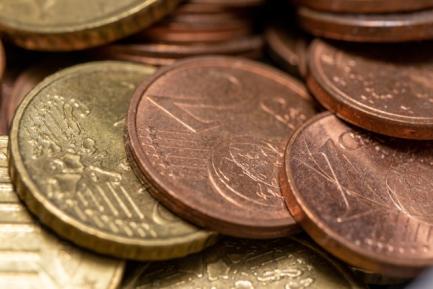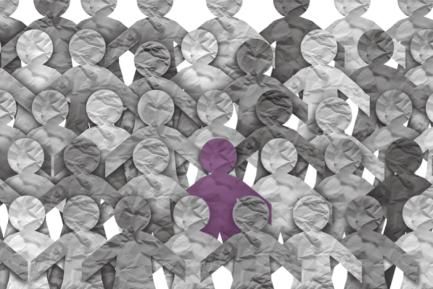
Spanish households’ savings and financial wealth on the decline
In Spain, households have begun to reduce the savings accumulated during the pandemic in order to sustain their consumption levels in an environment of high inflation. The fall in the savings rate has also been reflected in Spanish households’ financial assets.
The rise in inflation caused a fallin the savings rate in Q3 202
In Q3 2022 there was a sharp fall in the household savings rate. It should be recalled that even in the first two quarters of 2022, Spanish households had continued to save more than prior to the pandemic. Specifically, in Q1 the savings rate (as a percentage of gross disposable income, or GDI) in seasonally adjusted terms was 10.1% and in Q2, 8.4%, both figures above the 6.7% recorded on average between 2015 and 2019. However, in Q3 2022 we did see a considerable fall in the savings rate to 5.7% in seasonally adjusted terms, marking the lowest figure since Q3 2018.
Faced with rising inflation, households reduced their savings in order to sustain their consumption levels. Specifically, the increase in household consumption in real terms was 1.4% year-on-year, which represents a significant slowdown compared to the 3.4% recorded in Q2. However, in nominal terms consumption growth was 12%, a figure far higher than the increase in gross disposable income, which was 1.6%.1
- 1According to the non-financial accounts, including households and non-profit institutions.

Looking at the composition of GDI, the buoyancy of the labour market was the main driver of its growth (wage earners’ compensation grew by 5.8% year-on-year in Q3), but this was greatly mitigated by the negative contribution of taxes (see second chart). This explains why primary gross income (income before taxes and benefits) increased well above total gross income (5.1% year-on-year in the case of primary income versus 1.6% for total income).
The average savings rate for 2022 is expected to be slightly above 6.0%, well below the 13.7% of 2021. Looking ahead, all the indicators suggest that in 2023 the household savings rate will continue to gradually reduce due to the impact of inflation, albeit more gently than in 2022. Not surprisingly, we expect nominal consumption to grow by more than 5% in 2023. This is a difficult pace for GDI to match in a context in which the somewhat more dynamic wage growth and the 8.5% pension rise will be partially mitigated by higher interest payments following the rise in the Euribor. Thus, we expect the savings rate in 2023 to be well below the average for 2015-2019, which was the aforementioned 6.7%.

Households reduced their debt, but their financial wealth also fell
Was the decline in the savings rate reflected in households’ financial assets? The answer is yes. Not in vain, the net acquisition of financial assets in Q3 was –27,800 million euros; that is, there was a net sale of assets. This is a usual occurrence in any Q3, although in this case the amount exceeds the pre-pandemic figures (average of –23,546 million in 2015-2019). This «de-accumulation» affected all classes of financial assets, particularly equities and investment funds, with around 5,600 million euros sold, marking the largest volume in Q3 of any year since 2013.2 In contrast, households reduced their bank deposits by 1,219 million, a limited sum compared to the average of –8,145 million in Q3 in the years 2015-2019.
- 2Holdings in insurance policies and pension funds also suffered a net divestment of –2,061 million.

This net sale of financial assets was exacerbated by a devaluation effect amounting to 25,500 million euros3 due to the fall in prices in the financial markets. As a result of these two factors, the stock of households’ financial assets fell by 53,431 million euros (–2%), the biggest drop since Q1 2020, to 2.6 trillion euros; in terms of GDI, this amount represents 324%, the lowest level in two years. Thus, the stock of financial assets has continued to lose value and, as a proportion of GDI, has dropped to 17.5 pps below the peak reached in Q4 2021 and just 11 points above the pre-COVID level. In real terms, the stock of financial assets has reduced since the end of 2019, as it has increased by 7.1% in nominal terms while cumulative inflation in the same period has amounted to 11.7%.
As for the structure of households’ financial wealth, the trend of recent years is accentuated: bank deposits remain the main asset class and have even increased their share to 38.5% of the total, 7 percentage points more than in the previous quarter and 3 points above the levels of Q4 2019. On the other hand, insurance policies and pension funds have lost prominence, representing 12.7% of the total, 3 points less than at the end of 2019. Equities and investment funds, meanwhile, stabilised at around 43% of the total.
- 3The loss of value in equities and investment funds was particularly pronounced (–16,371 million), in line with the decline in stock prices, insurance policies and pension funds (–10,500 million).

As for the net liabilities incurred, households repaid debt in the quarter (bank loans) worth 9,846 million euros, although it is still too early to declare that we are witnessing a pattern of early repayments in the face of the interest rate rises, since this is a seasonal phenomenon and the amount is only slightly higher than the average for 2015-2019 (–9,311 million).4 Consequently, the deleveraging of households is intensifying: in Q3 2022 the debt balance fell by 10,000 million euros to a total of 707,528 million (–1.4%), representing 87.5% of GDI (89.1% in Q2), the lowest ratio since the close of 2003.
Given that the stock of households’ financial assets fell more sharply than that of their liabilities, their net financial wealth continued to trend downwards and fell almost 6 points to 229.9% of GDI, the lowest level since Q3 2020.
In any case, in comparison with the crisis of 2008-2013, households today are in a better financial position to successfully deal with the weakening of economic activity, both in terms of their wealth and their indebtedness, which at that time (Q4 2008) stood at 252.3% and 132.5% of GDI, respectively.
- 4In four-quarter cumulative terms, lending remains positive and is even accelerating (7,624 million vs. 6,870 million in 2021 as a whole).



